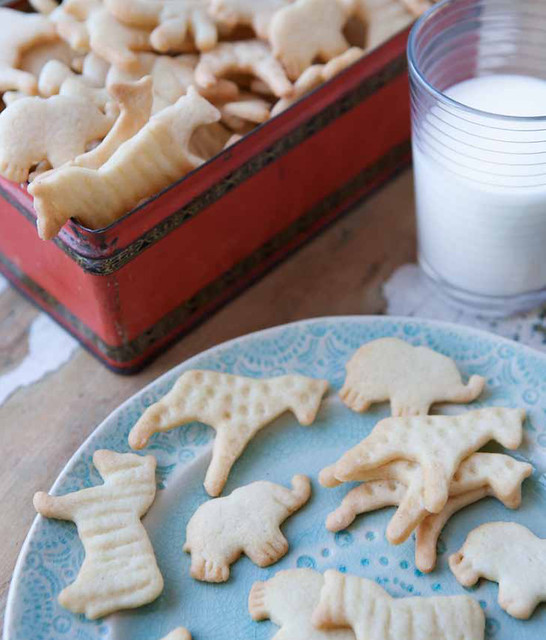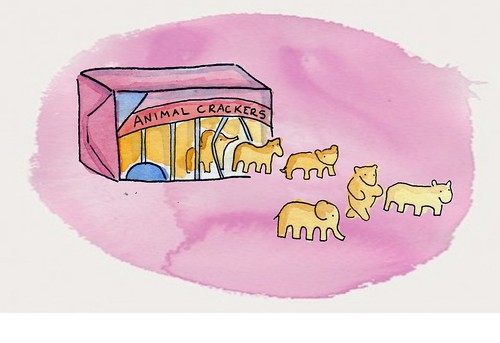| CakeSpy Note: Sometimes, I like doing sweet things for you, readers. And so I decided to share an inside look at one of my favorite stories--and recipes!--from my new book, The Secret Lives of Baked Goods: Sweet Stories & Recipes for America's Favorite Desserts. This tale is all about animal crackers. Enjoy! "Animal crackers and cocoa to drink that is the finest of suppers I think; when I am grown up and have what I please I think I shall always insist upon these." —Actor and writer Christopher Morley Everyone loves those curious animal-shaped cookies that pack a crunch and are called "crackers." But how is it that these proud little animals began marching their way into our mouths and hearts? Well. The custom of crafting cookies that resemble creatures is nothing new— as early as the 1600s in Germany, bakers were making sweet treats resembling savage beasts. But it wasn't until the 1800s that the wheels began to turn, set- ting off the chain reaction that made these sweet crackers a snacking staple. For this we owe a thank-you to the industrial revolution: that's when biscuits, cookies, and crackers began to be manufactured in factories. In Victorian England, "crisp biscuits"—that's sweet, cracker-like cookies, to Americans— were very popular. Some of these biscuits were shaped like animals. A hint of things to come was evident when Zoologicals, animal-shaped cook- ies made by Philadelphia baker Walter G. Wilson, were sold at the Centennial Exposition of 1876—the first world's fair in America. (This pivotal event yielded many innovations, including the introduction of the Dewey Decimal system, the ice cream soda, and the grand debut of the Statue of Liberty's torch, before it was affixed to the rest of her body in New York City.) After acquiring two New York City bakeries that produced animal-shaped biscuits, the National Biscuit Company (later Nabisco) began producing animal-shaped biscuits on a commercial scale which allowed for widespread distribution. Serendipitously, this timing coincided with P. T. Barnum's growing reputation as an international showman and circus owner. Perhaps sensing a sales opportunity, several companies had begun marketing foods of all sorts with circus-themed packaging, and these biscuits were a natural tie-in. The National Biscuit Company did it most famously, with their 1902 debut of the animal-shaped crackers. Marketed as a specialty holiday item, they were sold in a small box resembling a circus cage with a handle at the top, for displaying as an ornament. The crackers proved so popular that they were soon being produced year-round, the ornament string promoted as an easy way for children to transport the cookies. In 1948, they were renamed Barnum's Animal Crackers, which is what they're still called today. But for all the glittering success of the Barnum associa- tion, the circus man did not receive payment for the use of his name: according to an article in the Washington Post, he never got a cent for the crackers. Ready for a recipe? Here's an adaptation of the one in the book. For more sweet stories and recipes, buy the book: The Secret Lives of Baked Goods: Sweet Stories & Recipes for America's Favorite Desserts. Homemade Animal Crackers (Printable version here) Makes about 6 dozen Ingredients
Procedure
And in closing: Per Panati's Extraordinary Origins of Everyday Things via CakeSpy http://www.cakespy.com/blog/2013/7/17/the-story-of-animal-crackers.html | |||
| | |||
| | |||
|
Wednesday, July 17, 2013
The Story of Animal Crackers
Subscribe to:
Post Comments (Atom)




No comments:
Post a Comment